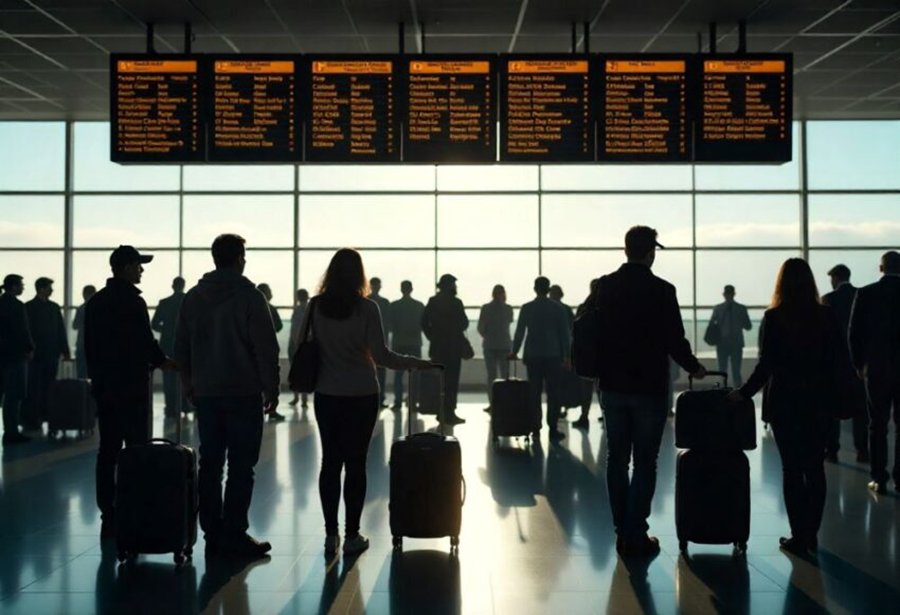читайте также
 Spain’s Real Estate: Record Prices and Falling Yields
Spain’s Real Estate: Record Prices and Falling Yields
 European Hotel Construction Market Breaks Records: Upper Upscale Segment Reaches New Heights
European Hotel Construction Market Breaks Records: Upper Upscale Segment Reaches New Heights
 Middle East Hotel Construction Pipeline Hits Record High: 659 Projects and 163,816 Rooms Under Development
Middle East Hotel Construction Pipeline Hits Record High: 659 Projects and 163,816 Rooms Under Development
 New Rules for Greece’s Golden Visa: What Changes for Investors
New Rules for Greece’s Golden Visa: What Changes for Investors
 Holiday Travel 2025: Less Spending, More Generational Shifts — Deloitte’s New Forecast
Holiday Travel 2025: Less Spending, More Generational Shifts — Deloitte’s New Forecast
 Chaos in Asia: Flight Cancellations and Airport Delays Sweep Japan, China, Indonesia, and Bhutan
Chaos in Asia: Flight Cancellations and Airport Delays Sweep Japan, China, Indonesia, and Bhutan
Fuel crisis at Seattle Airport: the Olympic Pipeline outage has disrupted supplies

Photo: Reuters
Washington Governor Bob Ferguson declared a state of emergency after a leak on the Olympic Pipeline, a major petroleum products line. The incident led to a full stoppage of jet fuel supplies to Seattle–Tacoma International Airport (SEA), reports Travel and Tour World. Efforts to fix the defect have proven difficult: ten days later the situation remains unresolved.
Causes of the incident and initial response
The leak was detected on November 11 on a segment between Everett and Snohomish, north of Seattle. This section is part of the 400-mile Olympic Pipeline system that delivers gasoline, diesel and jet fuel to the region. For SEA, this pipeline is the main supply route for aviation fuel.
After the shutdown, airport fuel reserves became insufficient for stable operations. SEA advised incoming flights to fully refuel prior to departure to reduce ground consumption. The governor temporarily lifted limits on driver working hours to support fuel deliveries by truck. This allows for round-the-clock transportation, while road-safety requirements remain in place.
Restoration challenges
The situation turned out to be more serious than expected, reports Reuters. British Petroleum — one of the world’s largest oil and gas corporations and the operator of Olympic Pipeline through its subsidiary BP Pipelines North America — announced that one of the two lines was temporarily restored on November 17. The segment had been shut down to locate the source of the leak, and after restarting it operated in test mode for several hours. However, an increased amount of product was again detected in a collection pit at the response site, indicating that the leak continued.
Following the renewed discharge, BP shut down not only the restored line but the entire system. Olympic Pipeline once again fully ceased transporting fuel. The company began round-the-clock excavation work to access the pipe and conduct a visual inspection of the damaged segment. The timeline for repairs and restart remains unknown; assessments of the pipe condition and the volume of the leak are ongoing. As of November 21, the system remains completely shut down, with no part yet returned to service. Emergency crews are working 24/7, but there is still no forecast for when the pipeline will resume operation.
Risks for the U.S. aviation sector
Olympic Pipeline is a critical energy artery for Washington and Oregon. After the shutdown, the region became dependent on trucking, which cannot physically replace the volumes normally transported through the pipeline. With limited supply, SEA may face flight delays, fuel redistribution and increased pressure on nearby airports.
Federal and regional agencies have contained the leak and are preparing the damaged segment for repair, but there is no timeline for full restoration. The incident underscores the vulnerability of the fuel infrastructure in the U.S. Pacific Northwest. Dependence on a single pipeline makes the region sensitive to any disruption, while temporary alternatives — trucking and fuel redistribution between airlines — cannot fully compensate for the loss of the main supply route.
Earlier, the U.S. aviation system had already experienced one of the largest disruption waves in recent months. Severe storms and a brief FAA system failure on October 31 resulted in more than 1,200 cancellations and nearly 7,000 delays. In key hubs — New York, Richmond, Nashville — passengers spent nights in terminals while dispatchers had to coordinate departures manually.
The incident highlights how fragile the country’s aviation infrastructure is. Experts warn that without backup solutions and strengthened FAA capacity, the risk of future disruptions will remain.
Подсказки: Seattle, airport, jet fuel, pipeline leak, Olympic Pipeline, BP, FAA, aviation, USA, disruptions





